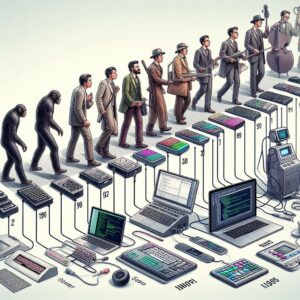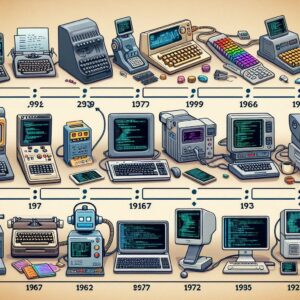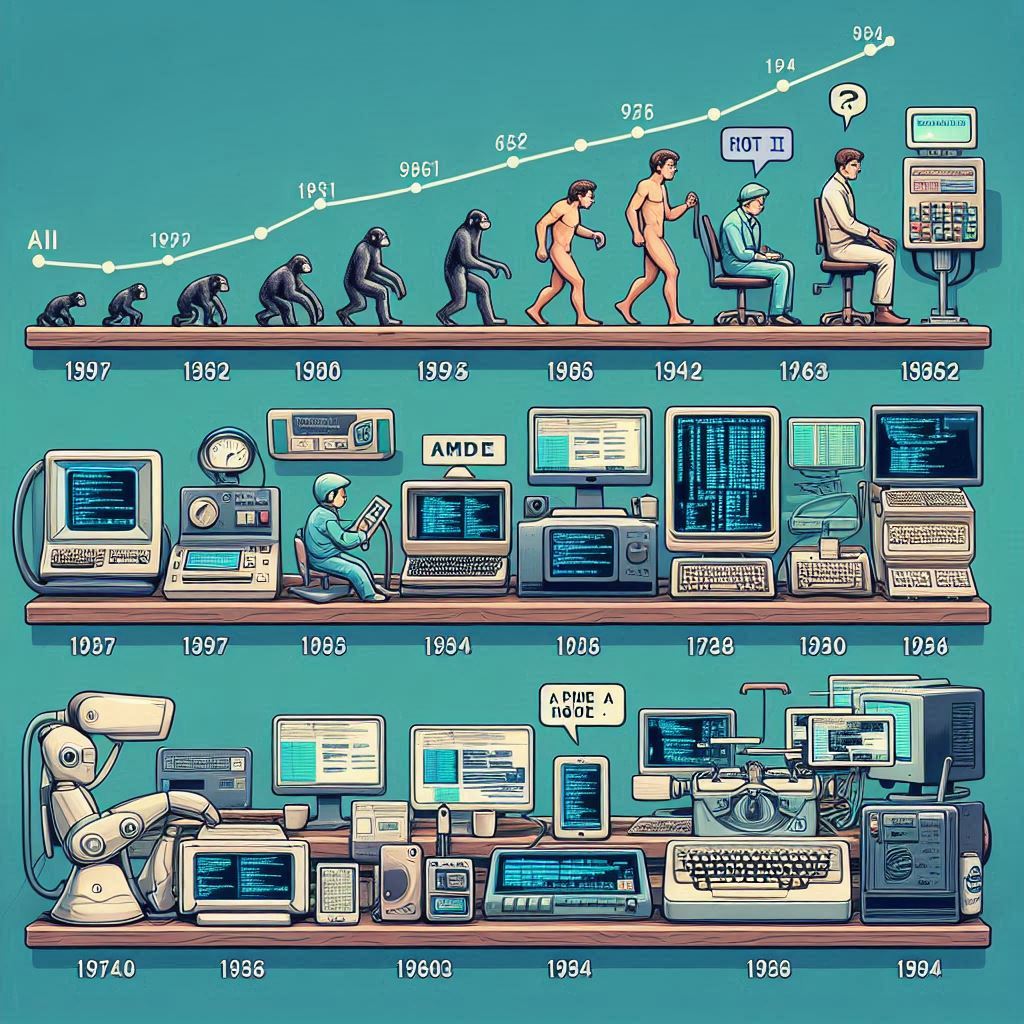The End of Programming as We Know It
- Traditional Programming: Manual coding and syntax-driven development
- Low-Code Solutions: Visual development environments reducing manual coding needs
- Automated Programming Tools: AI-powered systems that generate code from natural language
- Neural Architecture: Advanced automated programming tools that learn from existing codebases
According to Gartner’s 2024 AI trends report, the transformation is accelerating. As the MIT Technology Review notes: “By 2030, AI-assisted coding will reduce manual code writing by 40%.”

Keep reading to chart your path in this new era.
No-code Technology Reshaping Development
- AI Pair ProgrammingAccording to Stack Overflow’s 2023 survey, 78% of developers now use AI pair-programming tools weekly, revolutionizing code creation efficiency.
- Language-to-Code TranslationAdvanced models like GPT-4 coding capabilities are transforming natural language inputs into functional code, democratizing development.
- Visual Development PlatformsDrag-and-drop interfaces are enabling non-technical users to create complex applications without traditional coding knowledge.
These trends are fundamentally reshaping the future of software development.
Is this the “end of programming future” as we know it? Not quite. The future of programming is evolving, transforming into a more automated and accessible field. Let’s define the key players:
- Automated Programming Tools: Software that automates coding tasks, from generating code to debugging.
- AI-Augmented Coding: AI assists developers, boosting productivity and code quality.
- No-Code/Low-Code Platforms: Enable users to build software with minimal or no hand-coding.

These tools are reshaping the developer landscape. See Gartner’s 2024 AI trends report for more on AI advancements. As an MIT study projects, “By 2030, AI-assisted coding will reduce manual code writing by 40%” (technologyreview.com). Keep reading to chart your path in this new era.
No-Code Technology: The Rise of Citizen Developers
- No-Code Platforms: Tools like Webflow and Bubble allow anyone to create websites and apps without writing code. This democratizes software development.
- AI-Powered Code Generation: Tools like GitHub Copilot use AI models to generate code snippets, accelerating development and reducing errors. Explore GPT-4 coding capabilities.
- Automated Testing and Debugging: AI-driven tools can automate testing processes and identify bugs faster, leading to higher quality software.
“78% of developers now use AI pair-programming tools weekly” (Stack Overflow 2023 survey). These trends are redefining the future of software development. Download our free AI coding checklist.
Consider the success of “QuickBuild,” a fintech startup that leveraged AI to accelerate its development process. Facing pressure to deliver new features, QuickBuild adopted an AI-powered coding platform. “Our dev cycle shortened by 60% after adopting AI tools,” says their CTO. This enabled them to outpace competitors and secure a crucial round of funding. Read the full startup case study.
Staying ahead of software development trends is crucial in this rapidly changing landscape. Here’s how to prepare for the post-programming era:
1. Embrace Lifelong Learning
Continuously update your skills. Focus on understanding AI principles, data science fundamentals, and no-code platforms. As Forbes highlighted in their 2024 upskilling report, adaptability is key.
2. Specialize Strategically
While basic coding may become automated, specialized skills will remain in high demand. Consider areas like AI model training, cybersecurity, and blockchain development.
3. Develop Problem-Solving Skills
Automated tools can handle coding, but identifying and framing problems creatively still requires human ingenuity. Problem-solving expertise will increasingly differentiate programmers.
4. Build a Portfolio Highlighting Adaptability
Showcase projects that demonstrate your ability to leverage AI tools and adapt to new technologies. Include both coding and no-code projects to highlight your versatility.
Bookmark this guide to revisit key strategies as the programming landscape evolves.
Amidst the rise of artificial intelligence, fears of AI replacing programmers are widespread. However, it’s essential to separate myths from reality. Below, we debunk common misconceptions with data-driven insights.
| Myth | Reality | Data |
|---|---|---|
| AI will completely replace programmers soon. | AI assists programmers but doesn’t eliminate the need for human expertise. | Only 12% of coding tasks can be fully automated today (source: gartner.com). |
| Automation leads to massive job losses in tech. | Automation changes job roles, creating opportunities for skill development. | Companies predict automation-related skill gaps, not job eliminations (McKinsey automation study). |
| AI technologies are mature enough to handle all programming tasks. | AI still requires human oversight and is best used for routine tasks. | AI is expected to automate 69% of routine managerial work by 2024 (source: gartner.com). |
Share this myth-busting guide with peers.
FAQ: Your Burning Questions Answered
Q1: What is no-code technology?
A: No-code technology refers to platforms and tools that allow users to create software applications without writing traditional code. These platforms use visual interfaces, drag-and-drop components, and pre-built templates, making software development accessible to those without programming experience.
Q2: Will AI replace programmers entirely?
A: While AI is transforming the programming landscape, it’s unlikely to replace programmers entirely. AI can automate repetitive tasks and assist with code generation, but human creativity and problem-solving skills remain essential. According to the World Economic Forum’s 2023 report, AI will augment human roles rather than eliminate them.
Q3: How can developers stay relevant with the rise of AI?
A: Developers can stay relevant by embracing AI tools to enhance their productivity. Focusing on skills that AI can’t replicate—like critical thinking, creativity, and interpersonal communication—is key. Continuous learning and adapting to new technologies will help developers thrive alongside AI advancements.
Q4: What does the future of software development look like?
A: The future of software development is heading towards greater collaboration between humans and AI. With the growth of no-code and low-code platforms, more people can participate in creating software solutions. However, skilled developers will continue to be in demand for complex projects. Embracing these shifts is essential to succeed in the future of software development.
Submit your question for our next update.

